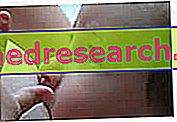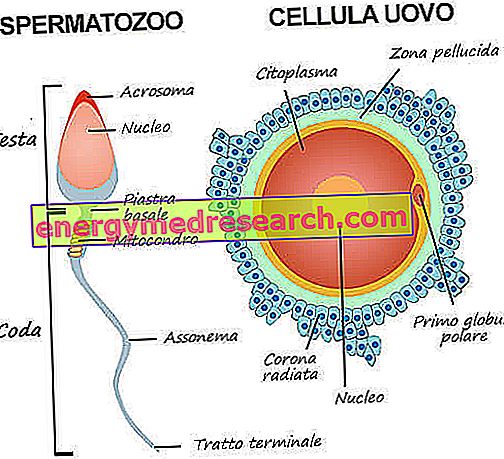The best food for the newborn
Breast milk is the most recommendable food for the newborn, as it provides all the nutrients but above all contains them in the right proportions. This discourse is valid for all mammals; cow's milk will therefore be ideal for the needs of the calf but it will not be ideal for those of the newborn.

Since his immune system is not yet effective enough to cope with them alone, the antibodies help the young body fight the environmental pathogens with which it comes into contact. Breast milk is therefore an extremely important and irreplaceable food which, in addition to the aforementioned immune action, positively stimulates the functionality of the baby's digestive organs.
After the first five or six days after giving birth, breast milk begins to change its composition. For this reason we no longer speak of colostrum but of transitional milk; the amount of protein and mineral salts is reduced, while the percentage of sugars and lipids becomes more generous. These variations are very important because the energy needs of the newborn, understood as calories per kg of body weight, are maximum in the first month of life.
Fifteen days after giving birth, the milk has reached a standard composition, which will be maintained until weaning. This milk, defined mature, is rather rich in lipids and glucides, but with a lower percentage of proteins and mineral salts.
Colostrum, Transition Milk, Ripe Milk
THREE TYPES OF MATERNO MILK are distinguished:
- COLOSTRO: produced from the 1st to the 6th day of the child's life, it is extremely rich in nutritional factors such as proteins, mineral salts and oligosaccharides; it also contains antibodies, white blood cells, lysozyme and complement factor.
- TRANSACTION MILK: produced from the 6th to the 14th day: it increases the percentage of fat and lactose (therefore the caloric intake) and decreases the share of proteins and minerals.
- MATURE MILK: produced from the 15th day onwards.
If breast milk is an irreplaceable food for the child, breastfeeding is particularly useful for the new mother:
- sucking stimulates the production of a hormone, called oxytocin, which acts by contracting the uterus and helping it to return in physiological conditions.
- Milk production leads to a moderate increase in energy expenditure (a natural help to regain the line after the months of pregnancy).
- Breastfeeding also seems to protect the mother from osteoporosis and according to some studies it would also reduce the risk of breast cancer (it is however epidemiological data, to be taken with statistical significance).
Properties of breast milk
- Nutritive: presence of proteins, lipids, mineral salts and sugars in quantities and proportions appropriate to the needs of the infant. The only slightly lacking element is iron; it must be said, however, that during the prenatal period the child builds up stocks that allow him to face the long breastfeeding period without going against specific deficiencies. Furthermore, iron deficiency in breast milk could be a strategy devised by nature to protect the overgrowth of harmful bacteria in the intestine, such as Escherichia coli that depends on it, facilitating that of the symbiont lactobacilli that protect the organism of small from infections.
- Breast milk is given a preventive role in the onset of early obesity. The concentration of fats tends to increase towards the end of the feed, inducing a feeling of satiety in the child. This obviously does not occur for feeding with artificial milk.
- Anti-infective: the nutritional aspect of breast milk can be approached, even if not perfectly matched, by artificial milks. The properties that are not reproducible in any way are the immune ones. Thanks to the presence of white blood cells, anti viral antibodies and specific antibodies, breast milk protects the newborn from pathogens present in the external environment; furthermore, the content of lactoferrin, lysozyme and immunocompetent cells promotes the development of beneficial intestinal bacteria, helping the child to eradicate the pathogens responsible for gastroenteritis (colic of the newborn);
- Anti-allergic: linked to the presence of immunoglobulins (IgA); with rare exceptions, there are no cases of allergy to breast milk. In contrast, breastfeeding appears to protect the child from food allergies in adulthood; this is because it delays the first contact with food, giving the immune system time to develop.
- In addition to the absence of economic weight, breast milk has the power to improve the mother-child relationship and is always ready for use, fresh and at body temperature.
For all these reasons, unlike what happened between the 1960s and the 1970s, the importance of breastfeeding and breastmilk is strictly protected by legislation, including in advertising.
| «Production milk, breast milk |  | Proteins and antibodies in breast milk » |



